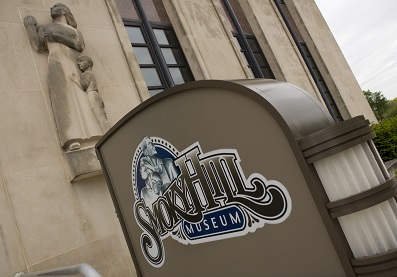The floors vibrate under the hum of machinery – awakened again for visitors to peek into the past.
Huge belts made of leather weave through flywheels on a journey to the top of the third floor and back to the basement as they help grind Kansas wheat into flour.
“The Smoky Valley Roller Mills processed about 35-bushels of wheat per hour, producing over 1,300 pounds of flour every hour,” said Sharon Entz, professional miller and volunteer tour-guide during Lindsborg’s 2016 Millfest.
The two day festival was a chance for students, history buffs and curious Kansans to gain an understanding of the mill that was originally powered in 1898 by turbines that turned in the Smoky Hill River.
Owners converted the mill to electric power in the 1930’s and operations closed in 1955. Restoration of the historic site began in the 1960’s and continued until the museum property was opened in 1981.
First year volunteer Entz is no stranger to the milling process, after earning a degree from Kansas State University in Milling Sciences she lives and works in the flour milling industry in Newton.
“It’s something that I find a lot of pride in, that here in Kansas we have grown this wheat for over 100 years and we have this amazing technology that was created here in Kansas and still be used today.”
Entz spent the weekend pointing out the numerous steps the wheat spends on its journey from the lifting auger to separators, sifters and roller breaks until it finally is poured in a holding bin as flour.
Entz said that while the mill was running at full capacity it took about four to six people to manage the operation, “And today it takes a real team effort of volunteers to pull this wonderful event off every year,” she said.
“I think we all as Kansans should be proud that we are able to do this – be the ‘bread basket’ for the world.”
All Photos by: Olivia Garretson


